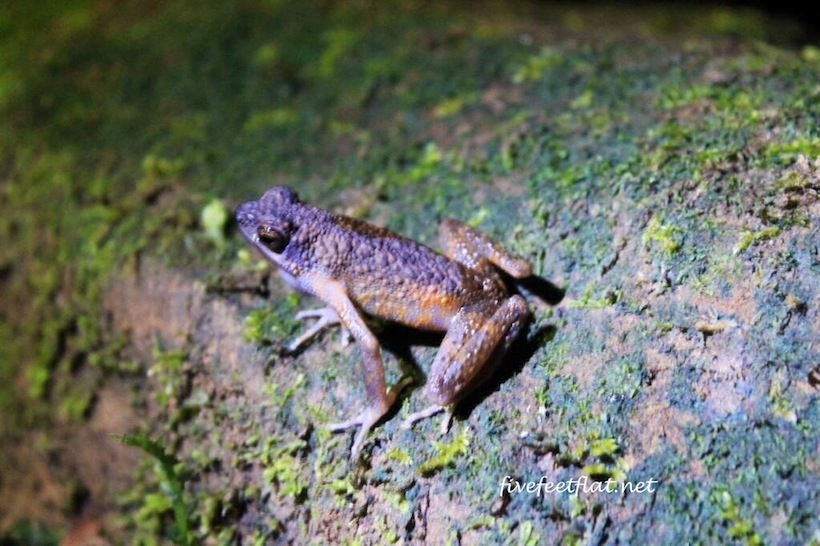The Bornean Frog Race
Question: When is a frog race not a frog race? Answer: When it’s not frogs, but human beings that have to race to the finish line.
I’ve never had any real opinions on frogs. Thanks to images in wildlife magazines and documentaries, I know that amphibians can be very colourful -jungle frogs in Central and South America come to mind- but that’s never been enough to inspire me to have a frog as a pet, let alone touch one.
I find frogs too slimy for my liking, yet they’re not overly repulsive the way rats are. To me, frogs are just these weird cold-blooded creatures that hop everywhere and have long tongues. I don’t come into contact with them too often- my most recent encounter with a frog was when one crawled up the pipe into my bathroom last year. It was dark brown and large and refused to go home. That kind of caused a major panic.
So when the opportunity came for me to take part in the 2014 Bornean Frog Race, the first thought that came to mind was: “Frogs actually race?” I was intrigued, and said yes.
The beauty of the Bornean Frog Race, however, is that it’s not frogs that are racing. The racers are the participants who go into Sarawak’s national parks to take as many photographs of frogs as they can.
The first Bornean Frog Race was held in 2012 to highlight the status of amphibians and raise public awareness of the issues surrounding their threatened existence. From a conservation standpoint, a third of the known species of amphibians are recognised as being under threat from diseases, invasive species, habitat loss from increasing human encroachment and pollution and pesticides.
But then (I hear you say), so what if a few frogs die? They serve no purpose to us anyway.
If it weren’t for Professor Indraneil Das of the Institute of Biodiversity and Environmental Conservation at the Universiti Malaysia Sarawak, I would be thinking the same thing too. Professor Das, who spoke to participants before the Race began, set out examples of how useful frogs are.
Firstly, amphibians eat insects that spread disease and damage crops, while tadpoles help to maintain healthy freshwater systems by feeding on algae.
Frogs help humanity in the medical sciences as their skin secretions are extremely useful in pharmaceuticals. Some 10% of Nobel Prizes in Physiology and Medicine have resulted from research involving frogs alone. Here’s a quote from Save The Frogs: “When a frog species disappears, so does any promise it holds for improving human health”.
Frogs also serve as an important food source to various predators including dragonflies, fish, snakes, birds and monkeys. The disappearance of frog populations is likely to disturb an intricate food web, and may result in negative impacts throughout the ecosystem.
Since 2012, Race participants have been required to follow a marked trail at night for two hours in one of Sarawak’s national parks to snap photographs of frogs. This year, the Race was held at the Kubah National Park.
Prizes are given to participants under three categories: the most number of species found, the rarest amphibians, and the best photo. There are separate awards for images taken with a DSLR, compact camera and mobile phone.
The other media participants and I weren’t part of the competition but we searched for frogs anyway. What came out of this experience? I never thought I’d say this, but frogs aren’t too bad after all. In fact, they’re actually rather cute. Here are some photos I snapped:
Disclaimer: I’m not an expert on amphibians, so I may have identified my frogs wrongly. Calling on the experts to tell me if I’ve made a mistake.
The next Bornean Frog Race will be held on April 25, 2015. Those interested in taking part should keep the following in mind:
1- You’ll be walking in the dark, so bring a flashlight or headlamp.
2-Wear good waterproof walking shoes or sandals because you might have to cross a few streams to look for frogs, since they like water.
3-Bring some drinking water and a raincoat just in case. Try not to wear jeans because you’ll get warm very quickly.
4-Don’t harm the amphibians and certainly don’t touch or take them away from wherever you found them.
More information on the Bornean Frog Race can be found here.
*A big thank you goes to Tune Hotels who flew me to Kuching, Sarawak. Accommodation was at the Tune Hotel Waterfront Kuching which has comfortable rooms and like its name suggests, has a great location near the Kuching Waterfront. Thanks also to the wonderful people at the Sarawak Tourism Board and Planet Borneo. As always, all opinions here -including how I now feel about frogs- are entirely mine.
© 2014, Anis. All rights reserved.














